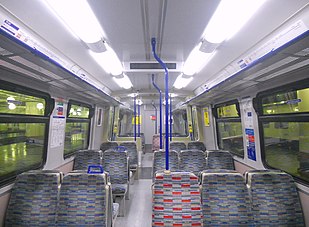
National Express East Anglia (NXEA) was a train operating company in England owned by National Express that operated the Greater Anglia franchise from April 2004 until February 2012. Originally trading as One, it was rebranded National Express East Anglia in February 2008. It provided local, suburban and express services from London Liverpool Street to destinations in Essex, Hertfordshire, Cambridgeshire, Suffolk and Norfolk in the East of England.

The British Rail Class 156 Super Sprinter is a diesel multiple unit passenger train. A total of 114 sets were built between 1987 and 1989 for British Rail by Metro-Cammell's Washwood Heath works. They were built to replace elderly first-generation DMUs and locomotive-hauled passenger trains.

The British Rail Class 360 Desiro is an electric multiple unit class that was built by Siemens Transportation Systems between 2002 and 2005. The Class 360 is currently operated by East Midlands Railway and the Global Centre of Rail Excellence.

The British Rail Class 153 Super Sprinter are single-coach railcars converted from two-coach Class 155 diesel multiple units in the early 1990s. The class was intended for service on rural branch lines, either where passenger numbers do not justify longer trains or to boost the capacity on services with high passenger volume.

The British Rail Class 317 is an electric multiple unit (EMU) passenger train constructed by British Rail Engineering Limited in two batches: 48 sets were produced in 1981–82 and 24 sets in 1985–87. They were the first of several classes of British Rail EMU to be based on the all-steel Mark 3 bodyshell, departing from the PEP-aluminium design which had spawned the earlier Class 313 to Class 315, Class 507 and Class 508. The Mark 3 bodyshell was also the basis of Class 318, Class 455 and the diesel Class 150. The Class 317 uses overhead alternating current electrification. All units were withdrawn in July 2022.

The British Rail Class 365 Networker Express was a class of dual-voltage electric multiple unit passenger train built by ABB at Holgate Road Carriage Works in 1994 and 1995.
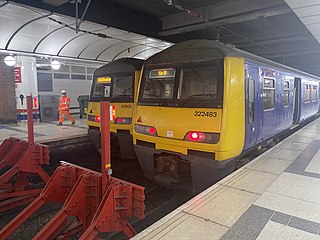
The British Rail Class 322 was a class of electric multiple unit passenger train built by British Rail Engineering Limited in 1990 for the Stansted Express service from London Liverpool Street to Stansted Airport. After becoming surplus to requirements on this route, the fleet saw further use with a number of other operators.
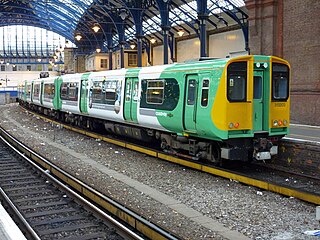
The British Rail Class 313 was a dual-voltage electric multiple unit (EMU) train built by British Rail Engineering Limited's Holgate Road carriage works between February 1976 and April 1977. They were the first production units that were derived from British Rail's 1971 prototype suburban EMU design which, as the BREL 1972 family, eventually encompassed 755 vehicles over five production classes. They were the first second-generation EMUs to be constructed for British Rail and the first British Rail units with both a pantograph for 25 kV 50 Hz AC overhead lines and contact shoe equipment for 750 V DC third rail supply. They were, additionally, the first units in Britain to employ multi-function automatic Tightlock couplers, which include electrical and pneumatic connections allowing the coupling and uncoupling of units to be performed unassisted by the driver whilst in the cab.

The British Rail Class 321 is a class of electric multiple unit (EMU) passenger train built by British Rail Engineering Limited's York Carriage Works in three batches between 1988 and 1991 for Network SouthEast and Regional Railways. The class uses alternating current (AC) overhead electrification. The design was successful and led to the development of the similar Class 320 and Class 322.

Eversholt Rail Group is a British rolling stock company (ROSCO). Together with Angel Trains and Porterbrook, it is one of the three original ROSCOs created as a result of the privatisation of British Rail.

The British Rail Class 379 Electrostar is an electric multiple unit (EMU) passenger train which was designed and built by Bombardier Transportation. The trains are part of the company's extensive Electrostar family.
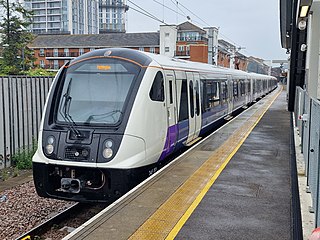
The Alstom Aventra is a family of electric multiple unit (EMU) passenger trains produced at Derby Litchurch Lane Works in the United Kingdom, originally by Bombardier Transportation and later by Alstom, as a successor to the Bombardier Electrostar. A large proportion of its design is based on the Electrostar, adding new technologies and achieving compliance with more stringent requirements and operator demands.

Greater Anglia is a British train operating company owned as a joint venture by Transport UK Group and Mitsui & Co. It operates the East Anglia franchise, providing the commuter and intercity services from its Central London terminus at London Liverpool Street to Essex, Suffolk, Norfolk and parts of Hertfordshire and Cambridgeshire as well as many regional services throughout the East of England.
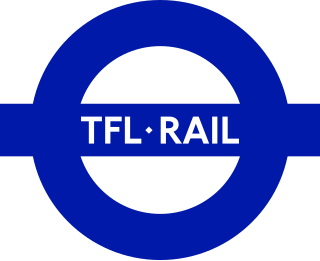
TfL Rail was the concession which operated commuter services on two separate railway lines in London, England and its environs whilst the Crossrail construction project linking these lines was underway. It ran from 2015 until May 2022, upon the opening of the Crossrail central section, when TfL Rail was rebranded as Elizabeth line and the name was discontinued.

The East Anglia franchise is a railway franchise for passenger trains on the Great Eastern Main Line and West Anglia Main Lines in England. It commenced operating in April 2004 when the Anglia and Great Eastern franchises, together with the West Anglia part of the West Anglia Great Northern franchise, were combined to form the Greater Anglia franchise.

The British Rail Class 331 Civity is a class of electric multiple unit built by CAF, owned by Eversholt Rail Group, and currently operated by Northern Trains. A total of 43 units have been built – 31 three-car units and 12 four-car units. Construction of the trains started in July 2017 and they were phased into service from 1 July 2019.
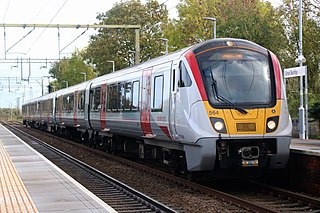
The British Rail Class 720 Aventra is a class of electric multiple unit (EMU) passenger train designed and produced by the rolling stock manufacturer Bombardier Transportation and Alstom. The Class 720 is operated by both Greater Anglia and c2c.

The British Rail Class 745 FLIRT is a class of electric multiple unit passenger train, built by Stadler as part of the FLIRT family. The class is built for Greater Anglia for use on their inter-city services and the Stansted Express services. They first entered service on 8 January 2020, after being constructed between 2018 and 2020 in Switzerland.
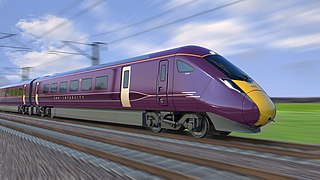
The British Rail Class 810 Aurora is a type of bi-mode multiple unit being constructed by Hitachi Rail for East Midlands Railway. Based on the Hitachi AT300 design, 33 five-car units will replace Class 222 units on EMR's intercity routes.

ScotRail Trains Limited, trading as ScotRail, is a Scottish train operating company that is publicly owned by Scottish Rail Holdings on behalf of the Scottish Government. It has been operating the ScotRail franchise as an operator of last resort since 1 April 2022.

